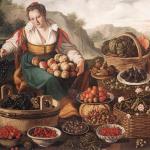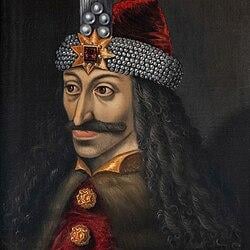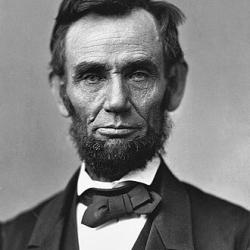Last Time on HOARATS
Now we move on to the
17th Century
1600 – 1649
Popes 232 – 236 reigned on the throne of St. Peter.
0 Saint Popes
0 Blessed Pope
5 Non – Sainted Popes
0 Anti – Popes
The Dark Frigate is a 1923 children’s historical novel written by Charles Hawes. It won the 1924 Newbery Medal. It was the third, and final, novel written by Hawes, who died shortly before its publication, making him the only author to be awarded the Newbery Medal posthumously. The book opens in 17th century London.
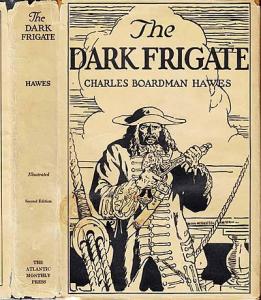
1600: Rappresentatione di anima et di corpo (Portrayal of the Soul and the Body) is a musical work by Emilio de’ Cavalieri to a libretto by Agostino Manni (1548-1618). With it, Cavalieri regarded himself as the composer of the first opera or oratorio. Whether he was actually the first is subject to some academic debate, as is whether the work is better categorized as an opera or an oratorio. It was first performed in Rome in February 1600 in the Oratorio dei Filippini adjacent to the church of Santa Maria in Vallicella.
1600: De Magnete, Magneticisque Corporibus, et de Magno Magnete Tellure (On the Magnet and Magnetic Bodies, and on That Great Magnet the Earth) is a scientific work published by the English physician and scientist William Gilbert (May 24, 1544? – November 30. 1603)
1600: The History of St. Patrick’s Day – ACH It’s time to re-write history. It’s been proven in written records that the first event commemorating Saint Patrick in the U.S. was held in St. Augustine, Florida in 1600, and the first St. Patrick’s parade/procession took place in 1601.
This pre-dates Boston’s claim to the first St. Patrick’s Day celebration in 1737 (stpatricksday.com), and New York City’s first St. Patrick’s Day parade in 1762 (history.com).First U.S. St. Patrick’s celebration held in St. Augustine, Florida in 1600 | Totally St. Augustine (totallystaugustine.com)
1602: The Dutch East India Company is founded by the Dutch.
March 24, 1603: Elizabeth I (September 7, 1533 – March 24, 1603) was Queen of England and Ireland from November 17, 1558 until her death in 1603. Elizabeth was the last monarch of the House of Tudor and is sometimes referred to as the “Virgin Queen“.
1605: Don Quixote by Miguel de Cervantes (September 29, 1547 (assumed) – April 22, 1616) is published. This is a founding work of Western literature, it is often labeled as the first modern novel and one of the greatest ever written. Don Quixote is also one of the most-translated books in the world.
Don Quixote de la Mancha and Sancho Panza, 1863, by Gustave Doré
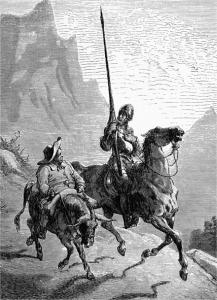
The House of Arden is a novel for children written by the English author E. Nesbit and published in 1908. A boy named Edred Arden inherits the title of Lord Arden and the dilapidated Arden Castle. He and his sister Elfrida search for the lost treasure of the Ardens and, with the help of the magical Mouldiwarp, they travel back in time searching for clues. The past events they witness include the 1605 Gunpowder Plot and a meeting with Sir Walter Raleigh in the Tower of London, from which the children escape using the same stratagem that Lady Nithsdale used in 1717.
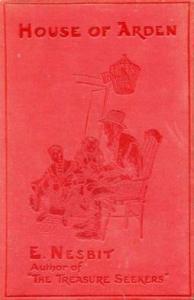
1606: Rembrandt (1606–1669) the famous artist is born.
April 15, 1607 – Saint César de Bus (February 3, 1544 – April 15, 1607) dies. He was a French Catholic priest and founder of two religious congregations.
1607: The English create the first permanent English settlement in the Americas at Jamestown, Virginia. The Jamestown settlers meet an unfriendly reception from the local Powhatan Indians, having to use their muskets to beat off an attack within two weeks of their arrival.
May 14, 1608: The Protestant League of Evangelical Union was a coalition of Protestant German states. It was formed by Frederick IV, Elector Palatine in order to defend the rights, land and safety of each member. It included both Calvinist and Lutheran states, and dissolved in 1621.
1608: Our Lady of Šiluva. This was an apparition of the Blessed Virgin Mary to some children. Pope Pius VI confirmed the authenticity of the apparition of Our Lady of Šiluva by a papal decree promulgated on 17 August 1775.
1607: John Smith (baptized January 6, 1580 – June 21, 1631) was a leader of the Virginia Colony between September 1608 and August 1609.
The new colony struggled with food shortages and disease, and in the fall of 1607 Smith began conducting expeditions to Native American villages to secure food. That December, a Powhatan hunting party captured Smith during one of these trips and brought him before Wahunsenacawh (commonly known as Chief Powhatan), the leader of most of the indigenous tribes in the Chesapeake Bay region.
According to Smith, the chief’s young daughter, Pocahontas, saved him from execution; historians have questioned his account. In any case, the Powhatan released Smith and escorted him back to Jamestown. John Smith: Facts, Life & Pocahontas – HISTORY
John Smith claims (many years later) that when captured by Indians he was saved from execution by Pocahontas, daughter of the chief.
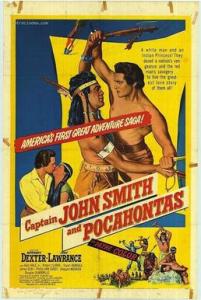
June 15, 1608: During a voyage in the Arctic Ocean, explorer Henry Hudson (c. 1565 – disappeared June 23, 1611)and the crew of the Hopewell sight what they claim to be a mermaid, swimming in the seas near Norway.
July 3, 1608: Samuel de Champlain (c. 13 August 1567 – December 25, 1635) on with the support of King Henry IV, founded the Habitation de Québec (now Quebec City) and made it the capital of New France and its regions (which, at the time, were Acadia, Canada and Plaisance in Newfoundland).
1608 –Canzoni per sonare – A collection of 36 short works by Gabrieli, Girolamo Frescobaldi, and others. Giovanni Gabrieli (c. 1554/1557 – August 12, 1612) was an Italian composer and organist. He was one of the most influential musicians of his time, and represents the culmination of the style of the Venetian School, at the time of the shift from Renaissance to Baroque idioms.
Frescobaldi (September 1583 – March 1, 1643) was an Italian composer and virtuoso keyboard player. He was appointed organist of St. Peter’s Basilica, a focal point of power for the Cappella Giulia (a musical organisation), from July 21, 1608 until 1628 and again from 1634 until his death.
July 10,1609: The Catholic league forms in opposition to the League of Evangelical Union.
1609: St. Dr. Francis de Sales’s “Introduction to the Devout Life” is published. He becomes a Doctor of the church in 1877.
1610’s
1610–1611: William Shakespeare‘s The Tempest is written and thought to be one of the last plays that he wrote alone.
July 18, 1610: Caravaggio (September 29, 1571 – 18 July 18, 1610), the famous Italian painter dies.
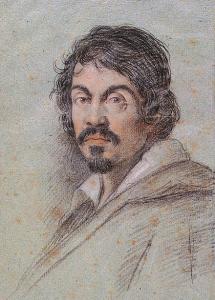
Chalk portrait of Caravaggio by Ottavio Leoni, c. 1621
1610: Cecco del Caravaggio (active c. 1610 – mid-1620s), is the notname given to a painter who worked in Rome in the early decades of the 17th century and was an important early follower of Caravaggio (1571–1610). In the past art historians have suggested he may have been a Flemish, French or Spanish Caravaggist but more recently some have identified the artist with Francesco Boneri (or Buoneri), although this is not universally accepted. In his work the artist responded in a very individual and original manner to Caravaggio’s naturalism.
1610: A flintlock designed in France (possibly by Marin Le Bourgeoys) becomes the standard firing mechanism for muskets
1610: Galileo, with his new powerful telescope, observes the moons of Jupiter and spots moving on the surface of the sun
May 14, 1610: Henry IV (December 13, 1553 – May 14, 1610), also known by the epithets Good King Henry or Henry the Great died. He was King of Navarre (as Henry III) from 1572 and King of France from 1589 to 1610. He was the first monarch of France from the House of Bourbon, a cadet branch of the Capetian dynasty. He was assassinated in 1610 by François Ravaillac, a Catholic zealot, and was succeeded by his son Louis XIII.
1610: The Alchemist is a comedy by English playwright Ben Jonson. First performed in 1610 by the King’s Men, it is generally considered Jonson’s best and most characteristic comedy.
1613: During a performance of Henry VIII at the Globe Theatre a cannon shot employed for special effects ignited the theatre’s thatched roof (and the beams), burning the original Globe building to the ground.
1613: Pocahontas was captured and held for ransom by English colonists during hostilities in 1613. During her captivity, she was encouraged to convert to Christianity and was baptized under the name Rebecca. She married the tobacco planter John Rolfe in April 1614 at the age of about 17 or 18, and she bore their son, Thomas Rolfe, in January 1615.
July 14, 1614 – Camillus de Lellis, M.I., (May 25, 1550 – July 14, 1614) dies. He was a Roman Catholic priest from Italy who founded the Camillians, a religious order dedicated to the care of the sick. De Lellis is the patron saint of the sick, hospitals, nurses and physicians. His assistance is also invoked against gambling.
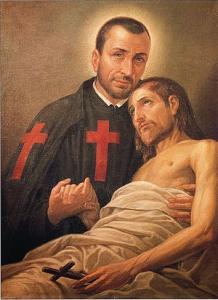
August 21, 1614: Countess Elizabeth Báthory de Ecsed ( August 7, 1560 – August 21, 1614) died. She was a Hungarian noblewoman and alleged serial killer from the family of Báthory, who owned land in the Kingdom of Hungary (now Slovakia).
1615: The Dutch found their first colony in North America, Fort Nassau, on Castle Island along the Hudson, near present-day Albany. The settlement served mostly as an outpost for fur trade with the native Lenape tribespeople, but was later replaced by Fort Orange. Both forts were named in honor of the House of Orange-Nassau.
1616: Captain John Smith publishes A Description of New England.
1616-William Shakespeare dies at New Place, his home in Stratford-upon-Avon, and is buried in Holy Trinity Church. According to Guinness World Records, Shakespeare remains the world’s best-selling playwright, with sales of his plays and poetry believed to have achieved in excess of four billion copies in the almost 400 years since his death. He is also the third most translated author in history.
March 11,1616
-
- Galileo Galilei meets Pope # 233 Non-Pope Paul V (May 16, 1605 – January 28, 1621- 15 years, 257 days)in person, to discuss his position as a defender of Copernicus’ heliocentrism.
- English Roman Catholic priest, Thomas Atkinson, is hanged, drawn, and quartered at York, at age 70 (he will be beatified by Pope John Paul II on November 22, 1987).
1616 – Jesuit astronomer Christoph Scheiner becomes the advisor to Archduke Maximilian, brother of Rudolf II, Holy Roman Emperor in Vienna. A lifelong enemy of Galileo, following a dispute over the nature of sunspots, Scheiner is credited with reopening the 1616 accusations against Galileo in 1633.
August 24, 1617: St. Rose of Lima (1586–1617), lay Dominican (Peru) dies.
-
- Declared Venerable: N/A
- Beatified: 15 April 1668 by Pope Clement IX
- Canonized: 12 April 1671 by Pope Clement X

St. Rose was a member of the Third Order of Saint Dominic in Lima, Peru, who became known for both her life of severe asceticism and her care of the needy of the city through her own private efforts. A lay member of the Dominican Order, she was declared a saint by the Catholic Church, being the first person born in the Americas to be canonized as such.
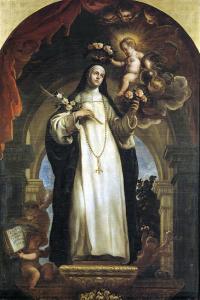
May 23, 1618 – The Second Defenestration of Prague – Protestant noblemen hold a mock trial, and throw two direct representatives of Ferdinand II of Germany (Imperial Governors) and their scribe out of a window into a pile of manure, exacerbating a low-key rebellion into the Bohemian Revolt (1618–1621), precipitating the Thirty Years’ War into armed conflict, and further polarizing Europe on religious grounds.
1618–1648 The Thirty Years’ War Begins
1618–1625 The Bohemian phase of the Thirty Years’ War takes place.
April 18, 1618 – Marie of the Incarnation (February 1, 1566– April 18, 1618) dies. She was the foundress of Discalced Carmelites in France, who later became a lay sister of the order. She has been called the “mother of Discalced Carmel in France”.
1619 – (ACH Podcast) Squanto (c. 1585 (±10 years?) – November 30, 1622 O.S.) the native american returns to America after being kidnapped and brought to Europe in 1614. He arrives not too long before the Pilgrims land in Plymouth in which he helps them settle in the land and helps them plan and prepare the first Thanksgiving meal.
1620’s
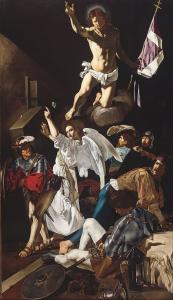
Resurrection (Cecco del Caravaggio) – Wikipedia 1619–20
1620–Francis Bacon (January 22, 1561 – April 9, 1626), publishes his philosophical work Novum Organum. The title is a reference to Aristotle‘s work Organon, which was his treatise on logic and syllogism. In Novum Organum, Bacon details a new system of logic he believes to be superior to the old ways of syllogism. This is now known as the Baconian method.
1620 – Don Quixote (Second Part) by Miguel de Cervantes is translated in english by Thomas Shelton.
1620 – English playwright and poet Ben Jonson (c. 11 June 1572 – c. August 6, 1637) publishes
- News from the New World Discovered in the Moon(masque)
- The second version of The Ballad of Chevy Chase.
1620 – Venerable Mary of Jesus of Ágreda OIC (April 2, 1602 – May 24, 1665) also known as (ACH Podcast) The Lady in Blue, was a mystic who never left her monastery in Spain, but through the spiritual gift of bi-location visited the Jumano people more than 500 times between 1620 and 1631 in west central Texas.
September 16, 1620: The Pilgrims (or Pilgrim Fathers), a group of 102 English settlers, sail in the Mayflower to the new world.
c. 1620: Judith Slaying Holofernes now at the Uffizi Gallery in Florence, is the renowned painting by Baroque artist Artemisia Gentileschi depicting the assassination of Holofernes from the apocryphal Book of Judith.
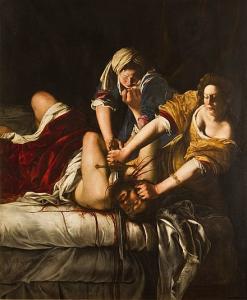
November 21, 1620:The Mayflower arrives inside the tip of Cape Cod (named from the Concord voyage of 1602), at what becomes known as Provincetown Harbor, with the Pilgrims and Planters; 41 Plymouth Colonysettlers sign the Mayflower Compact, the first governing document of the colony, on board the ship.
December 21, 1620: Plymouth Colony: William Bradford and the Mayflower Pilgrims land on what becomes known as Plymouth Rock, in Plymouth, Massachusetts. They gave it the name of Plymouth because it was the name of the port of departure in England.
Autumn 1621: The Mayflower settlers in Plymouth offer thanksgiving for their first harvest, eating turkeys in a celebration shared by local Indians.
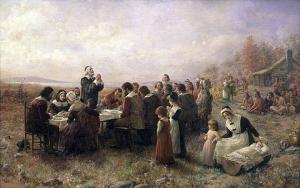
The First Thanksgiving at Plymouth, oil on canvas,
by Jennie Augusta Brownscombe, 1914
1622: Pope 234 Non-Saint Gregory XV (February 9, 1621 – July 8, 1623 – 2 years, 149 days) canonizes
- Ignatius of Loyola,
- Teresa of Ávila,
- Philip Neri,
- Isidore the Farmer
- Francis Xavier
He also initiates the Congregation for the Propagation of the Faith to direct missionary activities.
1622: A sudden attack by Powhatan Indians, led by their chieftain Opechancanough (1554–1646) against the English colony at Jamestown, results in the death of more than 300 settlers.
1623: Mr. William Shakespeare’s Comedies, Histories, & Tragedies is a collection of plays by William Shakespeare (bapt. April 26, 1564 – April 23, 1616) commonly referred to by modern scholars as the First Folio, published about seven years after Shakespeare’s death. It is considered one of the most influential books ever published.
1624–1642 – Reign of the famously hated Cardinal Richelieu. He has frequently been depicted in popular fiction, notably as the lead villain in Alexandre Dumas‘s 1844 novel The Three Musketeers and its numerous film adaptations.
1625–1629: The Danish phase of the Thirty Years’ War takes place.
1626: New St. Peter’s Basilica completed in Rome.
June 7, 1626 – Blessed Anne of Saint Bartholomew (October 1, 1550 – June 7, 1626) dies. She was a Spanish Discalced Carmelite. She was a companion to Saint Teresa of Ávila and led the establishment of new monasteries of in France and the Lowlands.
1628: Exercitatio Anatomica de Motu Cordis et Sanguinis in Animalibus (Latin, ‘An Anatomical Exercise on the Motion of the Heart and Blood in Living Beings‘), commonly called De Motu Cordis, is the best-known work of the physician William Harvey, which was first published in 1628 and established the circulation of blood throughout the body. It is a landmark in the history of physiology, with Harvey combining observations, experiments, measurements, and hypotheses in an extraordinary fashion to arrive at his doctrine. His work is a model of its kind and had an immediate and far-reaching influence on Harvey’s contemporaries; Thomas Hobbes said that Harvey was the only modern author whose doctrines were taught in his lifetime.
November 15, 1628 – St. Roque González y de Santa Cruz (1576 – 1628) and Companions, Jesuit priest (Paraguay-Brazil)
- Venerated: January 15, 1933
- Beatified: January 28, 1934
- Canonized: May 16, 1988
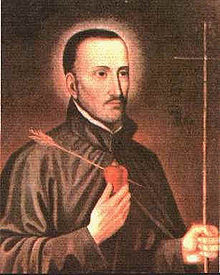
St. Roque was a Jesuit priest who was the first missionary among the Guarani people in Paraguay.
1629: The Edict of Restitution decrees that all lands seized from the Catholic Church since 1552 had to be returned to the Church.
1630’s
1630–1635: The Swedish phase of the Thirty Years’ War, during which the bubonic plague begins spreading throughout Germany.
1630: Johannes Kepler (December 27, 1571 – 15 November 15, 1630) dies.
1630: Rival Dutch, English and French colonies are established in Guiana, the northeast coast of south America.
1630: John Winthrop, (January 12, 1588 – March 26, 1649) appointed governor of the new Massachusetts Bay Company, sails from England with 700 settlers. He selects the site of Boston for the first Massachusetts settlement. After arriving in Massachusetts, begins the journal that is eventually published as The History Of New England
1632: The first coffeehouse is said to have appeared in 1632 in Livorno, founded by a Jewish merchant.
October 24, 1632: Antonie Philips van Leeuwenhoek (October 24, 1632 – August 26, 1723) is born. He was a Dutch microbiologist and microscopist in the Golden Age of Dutch science and technology. A largely self-taught man in science, he is commonly known as “the Father of Microbiology“, and one of the first microscopists and microbiologists. Van Leeuwenhoek is best known for his pioneering work in microscopy and for his contributions toward the establishment of microbiology as a scientific discipline.
1632: Maryland is granted to Lord Baltimore as a haven for English Roman Catholics.
1632: Shah Jahan begins building the Taj Mahal as a memorial for his wife, Mumtaz Mahal.
April 12, 1633 – Galileo Galilei is convicted of heresy by the Roman Catholic Church.
June 22, 1633 – The Roman Catholic Church forces Galileo Galilei to recant his heliocentric view of the Solar System. According to legend, he claims Eppur si muove.
1633– The Holy Sonnets—also known as the Divine Meditations or Divine Sonnets—are a series of nineteen poems by the English poet John Donne (1572–1631). The sonnets were first published in 1633—two years after Donne’s death. “Sonnet X“, also known by its opening words as “Death Be Not Proud“, is a fourteen-line poem, or sonnet, by English poet John Donne (1572–1631), one of the leading figures in the metaphysical poets group of seventeenth-century English literature. Written between February and August 1609, it was first published posthumously in 1633.
I am a little world made cunningly
Of elements, and an angelic sprite. No. 5, line 1
At the round earth’s imagin’d corners, blow
Your trumpets, angels, and arise, arise
From death, you numberless infinities
Of souls, and to your scattered bodies go. No. 7, line 1
1633: Rembrandt’s only known seascape, The Storm on the Sea of Galilee (1633), is still missing after the robbery from the Isabella Stewart Gardner Museum in 1990
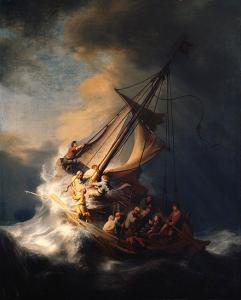
1634: First Oberammergau Passion Play in response to the plague is performed.
1634: Francesco Borromini begins work on his intricate baroque masterpiece, the Monastery of San Carlo alle Quattro Fontane (1634-43), in Rome.
1634: Rembrandt marries Saskia van Uylenburgh, who will feature in many of his paintings.
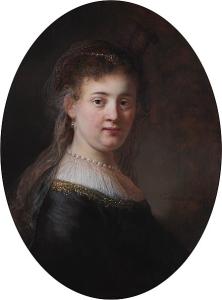
1635–1648: The French phase of the Thirty Years’ War takes place.
1636: North America’s first university is founded at Cambridge in the Massachusetts Bay Colony, and soon receives a large bequest from John Harvard. Two years later, in 1638, the college became home to North America’s first known printing press, carried by the ship John of London. Three years later, the college was renamed in honor of deceased Charlestown minister John Harvard (1607–1638) who had bequeathed to the school his entire library and half of his monetary estate.
1636: Rhode Island is founded by Roger Williams as a colony based on the principle of religious tolerance
1636 to 1638: Anne Hutchinson ( July 1591 – August 1643) was a Puritan spiritual advisor, religious reformer, and an important participant in the Antinomian Controversy which shook the infant Massachusetts Bay Colony from 1636 to 1638.
1637 – Discourse on the Method of Rightly Conducting One’s Reason and of Seeking Truth in the Sciences is a philosophical and autobiographical treatise published by René Descartes in 1637. It is best known as the source of the famous quotation “Je pense, donc je suis” (“I think, therefore I am“, or “I am thinking, therefore I exist”), which occurs in Part IV of the work.
Some date the beginning of the Enlightenment to this work. But did it begin here? Others cite the publication of Isaac Newton‘s Principia Mathematica (1687) as the culmination of the Scientific Revolution and the beginning of the Enlightenment. European historians traditionally dated its beginning with the death of Louis XIV of France in 1715 and its end with the outbreak of the French Revolution in 1789. Many historians now date the end of the Enlightenment as the start of the 19th century, with the latest proposed year being the death of Immanuel Kant in 1804. The Writer of ‘The Church and the Age of Enlightenment’ gives a start date for 1648 – 1800.
The former year marks the end of the Thirty Years’ War, a bitterly fought and highly destructive European civil war; the latter, a year that marked the end of the French Revolution, which realized the principles of the Enlightenment and changed the world forever. The final chapter of this book covers briefly the aftermath and reactions to the Enlightenment, bringing the story up to the year 1848. These major political and social events bookend an era marked by upheavals in thought, religious commitments, social relations, education, and culture with consequences reaching into the twenty-first century.
Of central importance to the Enlightenment project was undoing the authority of tradition and particularly the time-tested fusion of classical learning and Christian thought that had guided the development of Western civilization. Emboldened by the power of scientific reasoning for mastering nature and organizing human society, European and American men and women of influence tended to devalue or dismiss received ways of thinking.
Dominic A. Aquila, The Church and the Age of Enlightenment (1648–1848): Faith, Science, and the Challenge of Secularism (Reclaiming Catholic History) (2022) Ave Maria Press
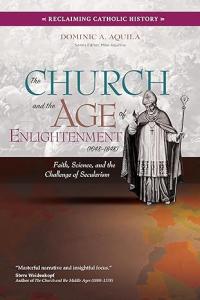
1637: The first public opera house, the Teatro San Cassiano, opens in Venice.
1637: Pierre Corneille’s play Le Cid, popular with Paris audiences, hinges on the conflict between duty and love
1937 – Cardinal Richelieu is known as the inventor of the table knife. Annoyed by the bad manners that were commonly displayed at the dining table by users of sharp knives (who would often use them to pick their teeth), in 1637 Richelieu ordered that all of the knives on his dining table have their blades dulled and their tips rounded. The design quickly became popular throughout France and later spread to other countries.
1638: Galileo’s Discorsi, published in Leiden, lays the groundwork for mathematical physics.
November 27, 1638 – Blessed Denis of the Nativity, OCD ( December 12, 1600, – November 27, 1638) dies. He was a Discalced Carmelite friar in Goa. He had previously been a sailor and cartographer in the service of the king of Portugal. He was killed in Sumatra while taking part in a diplomatic mission there on behalf of the Portuguese Empire.
1639: St. Marie of the Incarnation founds an Ursuline monastery in Quebec, the first institution of learning for women in North America.
October 4, 1639: (ACH Podcast) Margaret Brent became the first Maryland female land owner.
November 3, 1639: St. Martin de Porres (1579–1639), Dominican brother (Peru) dies.
“Everything, even sweeping, scraping vegetables, weeding a garden and waiting on the sick could be a prayer, if it were offered to God.”
― St. Martin De Porres: The Story of the Little Doctor of Lima, Peru
- Declared Venerable: N/A
- Beatified: October 29, 1837 by Pope Gregory XVI
- Canonized: May 6, 1962 by Pope John XXIII
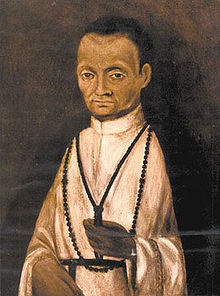
St. Martin de Porres was a Peruvian lay brother of the Dominican Order. He was the illegitimate son of a Spanish nobleman, Don Juan de Porres, and Ana Velázquez, a freed slave of African and Native descent.He is the patron saint of mixed-race people, barbers, innkeepers, public health workers, and all those seeking racial harmony.
He was noted for his work on behalf of the poor, establishing an orphanage and a children’s hospital. He maintained an austere lifestyle, which included fasting and abstaining from meat. Among the many miracles attributed to him were those of levitation, bilocation, miraculous knowledge, instantaneous cures, and an ability to communicate with animals.
1640’s
1640: The Dutch artist Gerrit Dou paints with exquisite precision and becomes leader of a group known as the ‘fine painters’.
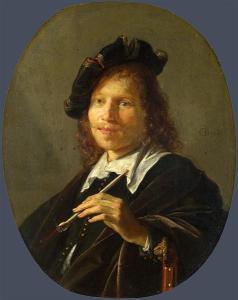
1640: The first book published in England’s American colonies is Bay Psalm Book, a revised translation of the psalms.
September 13, 1640 – Blessed Mary of Jesus (1560 – September 13, 1640) dies. Maria Lopez de Rivas took the Discalced Carmelite habit at Toledo in 1577 and made her profession the following year. She spent the rest of her life serving God in that Carmel, except for a brief period in 1585 when she helped with a foundation at Cuerva. Saint Teresa of Jesus thought extremely highly of her. She was a great contemplative, intensely devoted to our Lord, and often drawing inspiration from the liturgy.
– Carmelite Quotes
1641–Our Lady of Mount Carmel by Pietro Novelli is painted
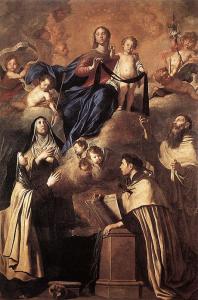
St. Jane Frances de Chantal, (January 28, 1572 – 13 December 13, 1641) dies. She was a French Catholic noble widow and nun who was beatified in 1751 and canonized in 1767. She founded the Order of the Visitation of Holy Mary. The religious order accepted women who were rejected by other orders because of poor health or age.
1642 – The “Huron Carol” (or “Twas in the Moon of Wintertime“) is a Canadian Christmas hymn (Canada’s oldest Christmas song), written probably in 1642 by Jean de Brébeuf, a Jesuit missionary at Sainte-Marie among the Hurons in Canada.
1642: The Dutch explorer Abel Tasman attempts to land in Golden Bay, New Zealand, resulting in a clash with the Maoris.
1642–1651 – Religious differences are a major factor in the English Civil War fought between supporters of King Charles I and Parliament that killed several hundred thousand people across the British Isles
December 25, 1642: Isaac Newton (December 25, 1642 – 20 March 20, 1726/27) one of the Most Influential Scientists of All Time is born.
January 1634: Two ships, (ACH Podcast) The Ark and The Dove land on St. Clement Island in the Potomac River, within the new colony of Maryland. The ships bring roughly 140 English colonists and their equipment and supplies to the new colony and Province of Maryland, one of the original Thirteen Colonies of British North America on the Atlantic Ocean eastern seaboard.
July 26, 1644 – Blessed Andrew of Phú Yên (1624 – 26 July 26, 1644) is known as the “Protomartyr of Vietnam” dies. He was baptized in 1641, he was a dedicated assistant to Jesuit missionaries and was thus arrested in the purge of Christians launched in 1644. After refusing to abjure the faith, he was put to death in Kẻ Chàm.
1644: The last Ming emperor hangs himself, and China acquires a new and final dynasty – the Qing.
1644–1655: Reign of Pope # 236 Non-Saint Innocent X (September 15, 1644 – 7 January 7, 1655 – 10 years, 114 days). The great-great-great-grandson of Alexander VI. Erected the Fontana dei Quattro Fiumi in Piazza Navona. Promulgated the apostolic constitution Cum occasione (1653) which condemned five doctrines of Jansenism as heresy.
1644: In his Principles of Philosophy Descartes gives priority to reason, summed up in his famous phrase cogito ergo sum is usually translated into English as “I think, therefore I am“.
June 13,1645: Miyamoto Musashi ( c. 1584 – June 13,1645) dies. He was a Japanese swordsman, philosopher, strategist, writer and rōnin, who became renowned through stories of his unique double-bladed swordsmanship and undefeated record in his 61 duels (next is 33 by Itō Ittōsai).
1646: Metrological pyramidology dates to the 17th century. John Greaves, an English mathematician, astronomer and antiquarian, first took precise measurements of the Great Pyramid at Giza using the best mathematical instruments of the day. His data was published in Pyramidographia (1646) which theorized a geometric cubit was used by the builders of the Great Pyramid (see: Egyptian royal cubit). While Greave’s measurements were objective, his metrological data was later misused by numerologists:
1646: The aged Powhatan leader Opechancanough is captured by the English and executed, ending the last significant Indian threat to Virginia.
1646: A young Hindu prince, Shivaji, captures Bijapur in a campaign against Muslim rulers that will result in his establishing a Maratha empire.
October 18, 1646: (ACH Podcast) Isaac Jogues,S.J.(January 10, 1607 – October 18, 1646) was a French missionary and martyr who traveled and worked among the Iroquois, Huron, and other Native populations in North America. He was the first European to name Lake George, calling it Lac du Saint Sacrement (Lake of the Blessed Sacrament). In 1646, Jogues was martyred by the Mohawk at their village of Ossernenon, near the Mohawk River.
The Children of the New Forest is a children’s novel published in 1847 by Frederick Marryat. It is set in the time of the English Civil War and the Commonwealth. The story follows the fortunes of the four Beverley children who are orphaned during the war, and hide from their Roundhead oppressors in the shelter of the New Forest where they learn to live off the land. The story begins in 1647 when King Charles I has been defeated in the civil war and has fled from London towards the New Forest.
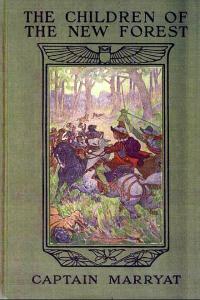
1649: King Charles I is publicly executed. Charles II, in the Hague, inherits the English and Scottish thrones of his executed father, Charles I. Parliament in London abolishes the monarchy in England, as ‘unnecessary, burdensome, and dangerous. Parliament chooses Oliver Cromwell to chair the new English Commonwealth’s council of state.
1649: Rembrandt creates an etching so desirable that it becomes known as the Hundred Guilder Print.
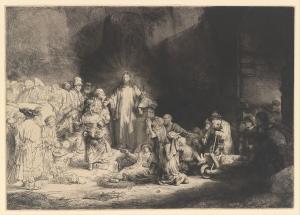
1649: John Milton becomes Latin secretary in Cromwell’s council of state.
1649: The Russian empire, expanding eastwards through Siberia, reaches the Pacific coast.
1649: Juan de Zurbarán (1620–1649), a Spanish Baroque painter dies.
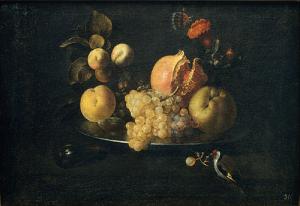
Still Life with Fruit and Goldfinch by Juan de Zurbarán,
Museu Nacional d’Art de Catalunya, circa 1640
Next Time on
HOARATS
To Understand
What I love and How I Write About History
Hit the Link Above.
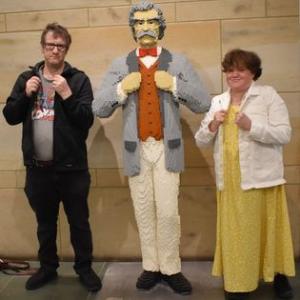
To understand about this particular series I’m writing about, please read
The Catholic Bard’s Guide To History Introduction
And to view a historical article click on


